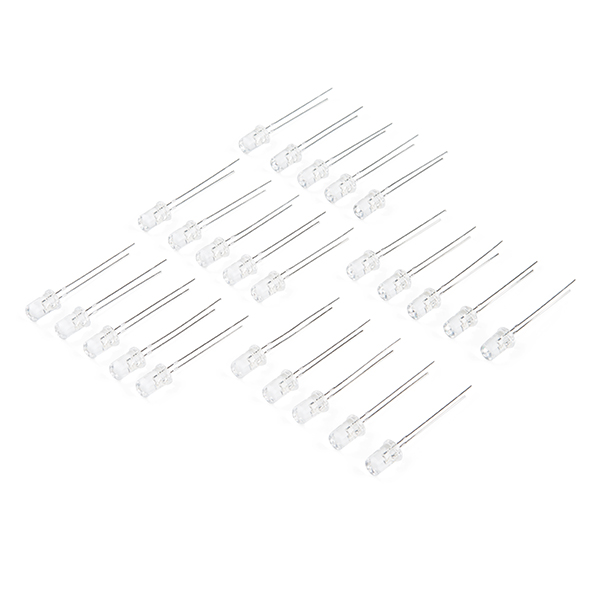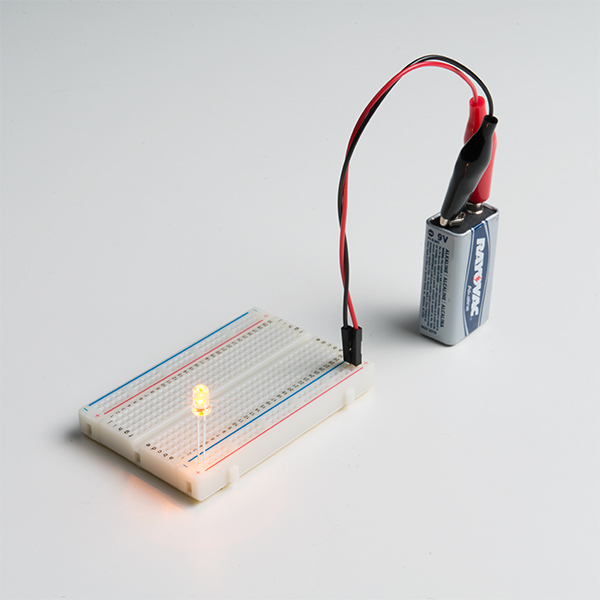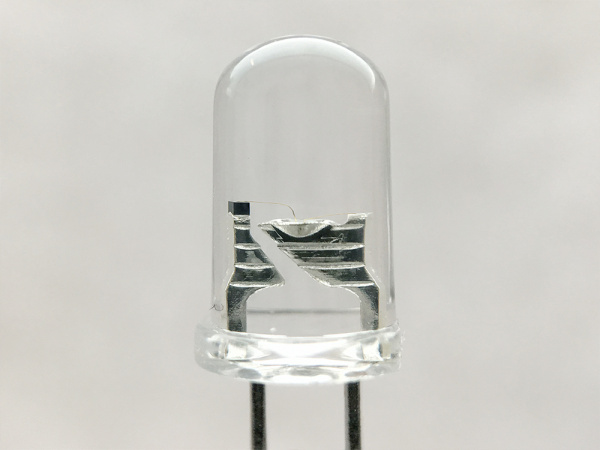×
SparkFun will be closed on Tuesday, December 24th, and Wednesday, December 25th, in observance of the Christmas holiday. Any orders qualifying for same day shipping placed after 2:00 p.m. (MST) on Monday, December 23rd, will be processed on Thursday, December 26th, when we return to regular business hours. Wishing you a safe and happy holiday from all of us at SparkFun!
Please note - we will not be available for Local Pick up orders from December 24th-December 27th. If you place an order for Local Pick-Up we will have those ready on Monday, December 30th.
LED - Yellow with Resistor 5mm (25 pack)
You don't have to worry about adding a resistor to an LED if you get an LED with a built in resistor! This pack of 25 yellow 5mm LEDs will help alleviate any frustrations you've had with accidentally burning them out by having a resistor in the diode itself. Each LED has an operating voltage range of 2.0V to 5V to help make your next project shine!
Each pack of these LEDs are conveniently bagged in reusable ESD safe packaging to make sure nothing accidentally gets damaged before you are able to use them.
- 25x Yellow LED w/ Resistor - 5mm
- Operating Voltage Range: 2.0V-5.0V
- Standard Size - T1 ¾ 5mm
- Brightness: 2000-2500 MCD
- Color: 585-595 NM
LED - Yellow with Resistor 5mm (25 pack) Product Help and Resources
Light-Emitting Diodes (LEDs)
August 12, 2013
Learn the basics about LEDs as well as some more advanced topics to help you calculate requirements for projects containing many LEDs.
Determining LEDs with Built-In Resistor
If you look closely at the image below, there is a small, black square IC on the post to limit the current on these types of LEDs.
For more information, check out our LED tutorial.
Core Skill: Electrical Prototyping
If it requires power, you need to know how much, what all the pins do, and how to hook it up. You may need to reference datasheets, schematics, and know the ins and outs of electronics.
Skill Level: Rookie - You may be required to know a bit more about the component, such as orientation, or how to hook it up, in addition to power requirements. You will need to understand polarized components.
See all skill levels
Comments
Looking for answers to technical questions?
We welcome your comments and suggestions below. However, if you are looking for solutions to technical questions please see our Technical Assistance page.
Customer Reviews
4 out of 5
Based on 1 ratings:
Very useful
When building on a solderless breadboard or soldering on protoboard, component placement can be difficult enough with limited space and limited tie points, working in the resistors for your blinken lights makes it even worse. Being able to connect these straight from signal to ground helps immensely. Will still use leds with matched resistors for final boards, but for prototyping, these are awesome!





I am a bit confused.. the photo shows a 9V battery directly connected to the LED but your product description states "Each LED has an operating voltage range of 2.0V to 5V..."
The datasheet says something about 5V for the forward voltage. Testing it out @ 5V, it pulls about 18mA. It has been working fine at 9V and pulls about 30mA. This is probably at the higher end of the input voltage. (PS: Any higher, I'd be worried. At about 16V, the LED blew out under our stress tests).